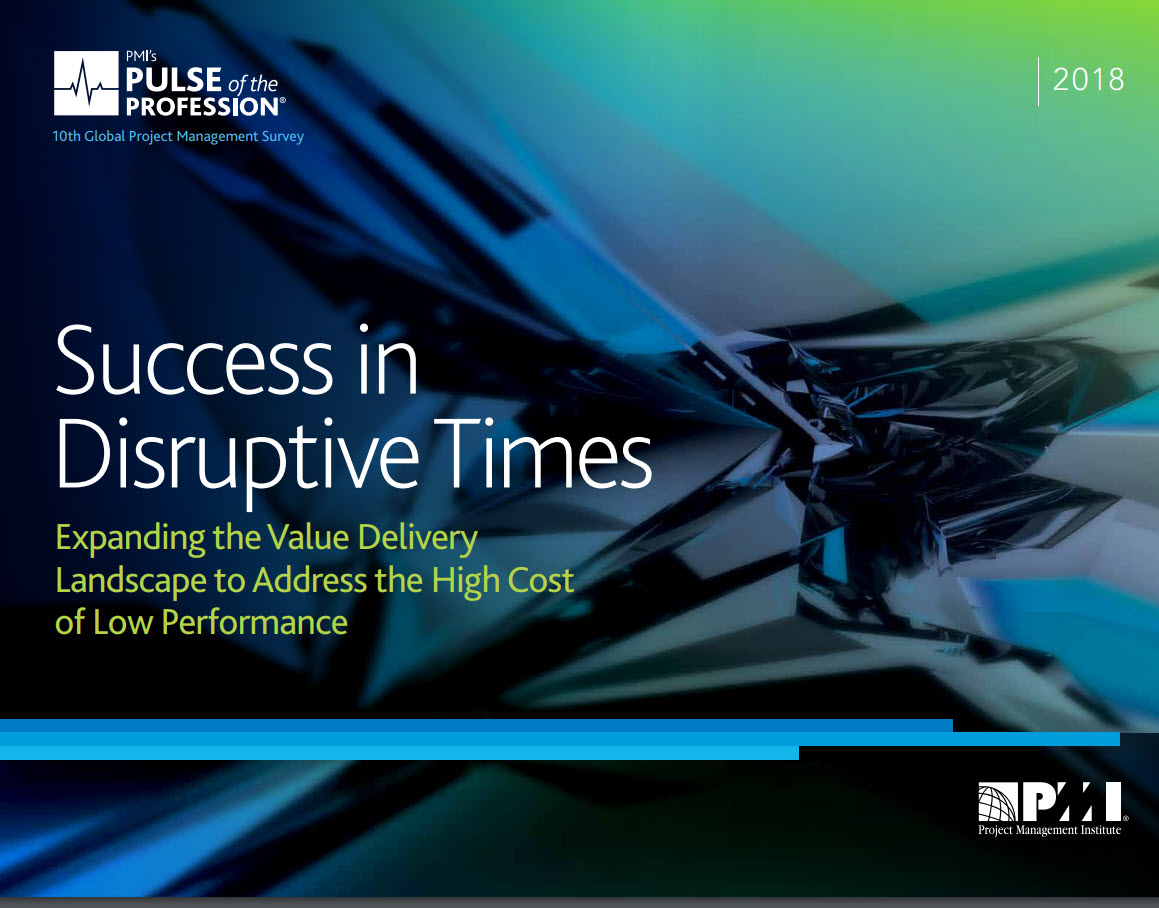The latest Pulse of the Profession® report from PMI reveals that too much money is being wasted on poor project performance.
In today’s world when an average of 9.9% of every project dollar is lost to lousy performance, it’s time for project professionals to achieve higher results by learning to adapt, adjust and innovate.
However, before you become a champion performer, you’ve got to understand what truly drives a project to success.
Top 3 Drivers For Project Success
A champion organization is built around the idea that through the right projects, programs, and management styles a competitive edge can be achieve. In order to save money, eliminate wasted funds, and enhance project success rates, the following three drivers must be embraced.
# 1. Invest In The Support of Executive Sponsors
PMI’s 2018 Pulse Report showcases the importance of engaged project sponsors to help bridge the gaps in communications, while simultaneously increasing support, enhancing collaboration, and reducing risks.
The data shows that when executive sponsors are actively engaged on 80% of projects there is a 40% higher success rate.
Additionally, 41% of under-performers stated that inadequate sponsor support was the primary cause for project failure.
These stats highlight the importance of not only encouraging a high level of executive sponsor support, but also the value of providing support in the face of under performance.
In other words, it is not enough to simply offer support on projects that seem to be performing in the “champion” category.
Instead, a culture must be created where the relationship between project managers and sponsors is robust to encourage the right-level of communications needed for success.
No easy feat, right?
Ever try to create a new culture at your company recently?
#2. Control Scope Creep
Any seasoned project manager knows when scope is creeping about. Their spidey-sense starts tingling.
It’s no secret that scope creep leads to the following:
- Decreased employee satisfaction;
- Project delays and missed deadlines;
- Additional workload that isn’t matched by available skill levels;
- Missed opportunities, lost revenue and
- Sunk Costs
When an average of 33% of projects experience scope creep, and 41% of projects are deemed “highly complex,” project managers need to say NO and recognize the importance of controlling scope throughout the entire project.
By controlling changes relating to scope, project managers can more effectively meet project deadlines, reduce risks, save funds, and exceed expectations.
#3. Establish Mature Value Delivery Capabilities
When a company starts to get better and matures at project delivery, then they can start to establish an environment of continuous improvement that adapts to changing market conditions.
Unfortunately, PMI reports that today fewer than 1 in 10 organizations report a high level of maturity within their value delivery capabilities.
Additionally, only 31 percent of organizations have effectively prioritized the development of mature value delivery capabilities. If you fail to establish mature value delivery capabilities, then the following benefits won’t be achieved:
- Minimized risk;
- Increased value;
- Controlled costs; and
- Rapid adaptation to changing project needs via predictive, incremental, agile, or iterative solutions.
Key Takeaway Insights From 2018 Pulse of the Profession
There are a few key report takeaways that project managers would do well to heed in the upcoming year.
- A spectrum of approaches ranging from predictive to hybrid must be adopted if a higher success rate is to be achieved. In other words, a project can only be successful if the right approach (predictive, hybrid, incremental, agile, IPD, Lean, etc.) is adopted. This means that organizations need to be flexible in their project management approach, so that goals can be met within budget and on time.
- Project management professionals must broaden their skills. Estimates show that by 2027 employers will need an estimated 87.7 million people working within the project management role. However, as the demand for experienced project managers continues to increase, so too will the required skill set expand to strategic advisor, innovator, communicator, adaptable “Big Thinker,” and versatile approaches including Scrum, agile, waterfall, and lean.
- Project professionals must learn to take advantage of a disruption. As business environments continue to rapidly change, so too will project professionals need to develop dynamic responses to these changes. Whether it is responding to the current digital transformation, keeping up with emerging technologies, or developing new leadership skills, project managers will need to become as versatile as they are skilled.The expanding project management role will cause organizations to place managers both strategic and high-profile roles that rely on immediate, effective, and advantageous responses to disruptions.
Effective Project Management Leads To A Dramatic Impact On The Bottom Line
The 2018 Pulse of the Profession report reinforces the belief that effective project management can dramatically impact the bottom line. By reducing the monetary waste associated with poor project performance, organizations can reinvest savings to subsequently produce more, achieve greater successes, and increase growth margins.
Champion organizations must embrace the three drivers (executive sponsor support, minimized scope creep, and mature value delivery capabilities) if they want to achieve 92 percent higher project success rates. Finally, through proven project management tactics organizations can reduce the amount of every dollar wasted from 29.1 percent to 1.4 percent. In short, effective project management leads to reduce spend, higher project success rates, and a competitive edge.
As a project management professional, what do you think about these changes? Leave your comments below.

